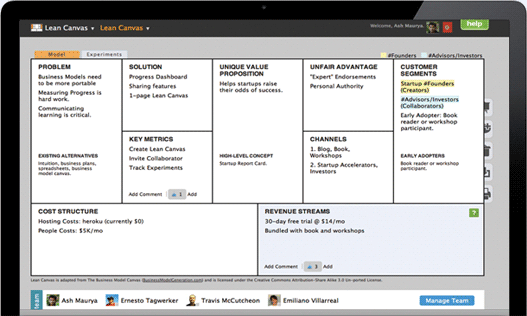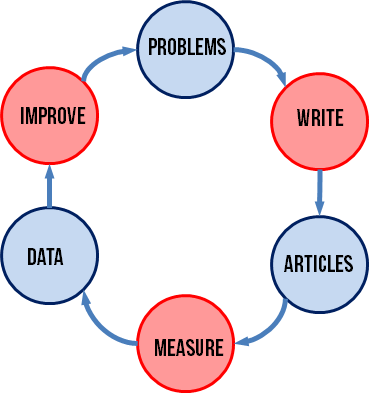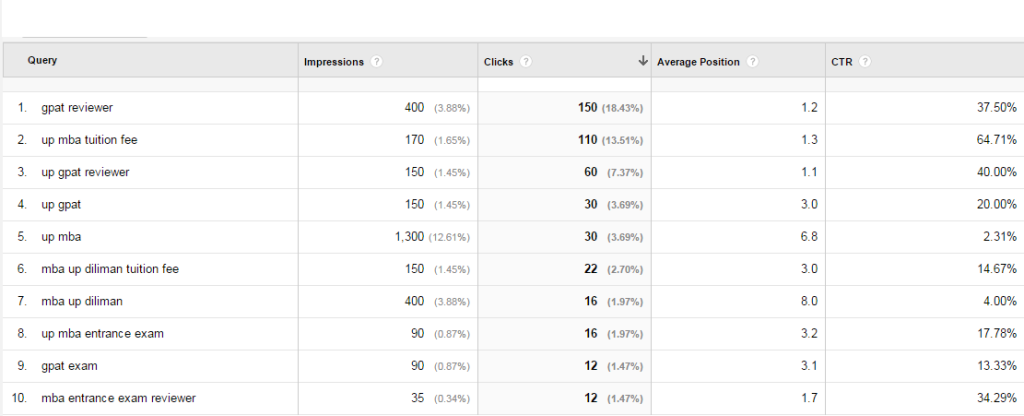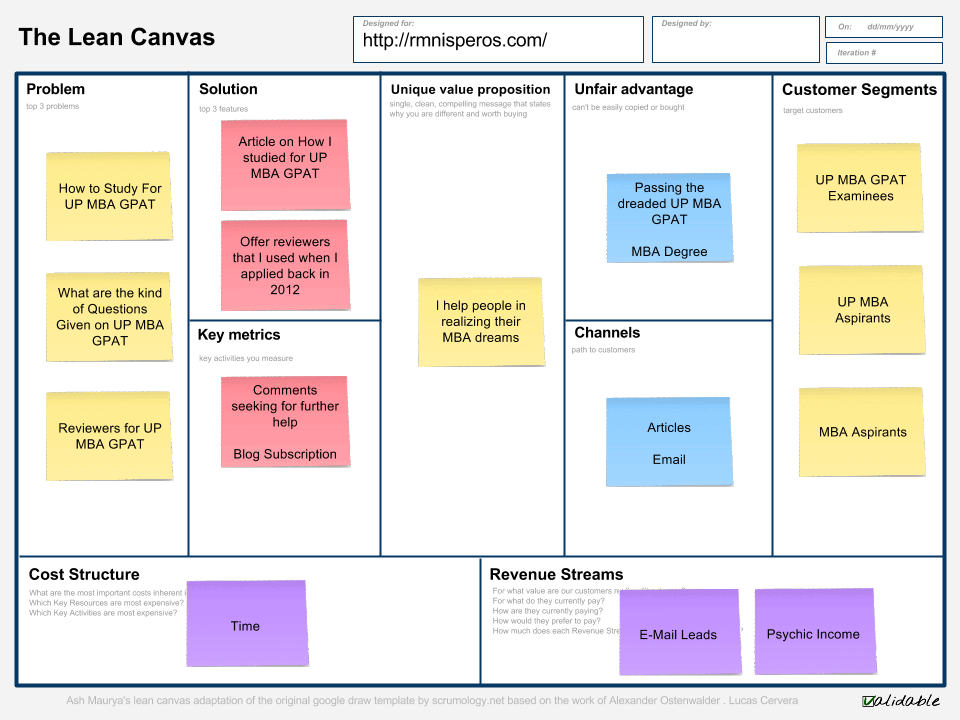“Lean” has been the thing of business startups ever since Eric Ries introduced the movement in his BookLean Startup. According to Eric Ries, the Lean Startup provides a scientific approach to creating and managing startups and gets their desired product to customers’ hands faster. Pretty impressive right? In this article, I am showing you how you can apply it to blogging which I call “lean blogging”.
Here’s the good part:
- Lean startup Eliminates Uncertainly. It veers away from the “just do it” approach. Starting a business is entering into a world full of uncertainty. The lean startup helps by establishing a process, a methodology.
- Lean Startup is about Working Smarter, not Harder. It treats businesses as experiments wherein the focus is on customers’ problems and not about building the business. The process is totally turned upside down wherein questions are framed like: “Should this business be built?” rather than “Can this business be built?”
- Lean Startup focuses on customer discovery. According to Ash Maurya, the author of Running Lean and founder of spark 59, the goal of any business is to make its customers happy. It’s not about the offerings; it’s about making solutions to their problems through the business and its offerings. Customers don’t care about your solution, customers care about their problems.
While the Lean Startup has become the bible of the tech startup movement, its philosophy is based on an actionable tool called the Lean Canvas— a tool developed Ash Maurya and adopted from the Business Model Canvas authored by entrepreneur Alexander Osterwalder and Swiss academic Yves Pigneur.
You might be wondering, Lean Canvas look like this:

The Lean Canvas is a one-page business model tool that focuses on defining customer problems and developing solutions to achieve problem-solution fit. Unlike the Business Model Canvas, what I like about the lean canvas is that it is centered on finding the right problems to solve rather than jumping directly on building the business. For more information on lean canvas, you can enroll FREE in Ash Maurya’s Udemy Lean Canvas Course
Does The Lean Principle Apply to Bloggers?
When I entered the blogging world through my personal blog rmnisperos.com, I struggled to gain traction. (See my crappy initial posts) According to tonyocruz.com, the Philippines is fourth in terms of writing blogs worldwide! And that’s just in the Philippines, what more if worldwide blogs are added to the blogging competition. You guessed it right, I had experienced blogging nightmares.
Some are these are:
- Writing articles only to know that It was read by only a few readers
- A lot of article comments but all are spams
- Bounce rates higher than my best grad school exam grades
Yes. It is that hard to gain traction even in your own country. There are lots of good bloggers to compete with.
Admittedly, I never intended my blog to be my source of passive income. I initially used it as a way to improve my writing skills. As I learned the craft, I discovered others that made blogging a source of passive income. Even, others made it their source of living. I tried applying for Google AdSense but my application was disapproved. (I now have an AdSense account)
Then I realized:
- My perspective on blogging is incorrect
- Blogging is a business startup
- Bloggers are business startup founders
Launching a new blog, whether it’s a niche or general is a hit-or-miss proposition. Based on my experience and every other aspiring blogger would attest, bloggers write articles they love, promote it to social media, and expect a viral effect. Somewhere along the process, bloggers suffer a painful realization. No one reads what they wrote. No one care what bloggers like. Readers care about their problems and what they like.
However, by thinking blogs as a business, it doesn’t mean instant success. The odds are not with us. According to ISSI, every 9 out of 10 businesses fail. I can arguably infer that 9 out of 10 blogs fail. The blogs that fail have 50% of their page views coming from their authors themselves.
Want to know the best part?
Lean Startup framework can be applied to blogging to minimize risks from failure. This is what I call Lean Blogging. It is an approach to creating articles and managing blogs that are reader-focused. Lean blogging favors experimentation that validates/invalidates blog assumptions, customer feedback over intuition, making happy readers by solving their problems.
I Applied Lean Blogging and my Blog’s Reader Engagement Insanely Increased By 353%
I’ve got good news and bad news…
First the bad news:
First, you’ll be blogging from a different perspective after reading the rest of the article.
The good thing is:
Your blog will gain traction you always wanted.
Before anything else:
Let me show you the framework I developed for Lean Blogging. From the Feedback Loop of the Lean Start-up, I adopted a similar framework built especially for blogs.


This work is licensed under a Creative Commons Attribution 4.0 International License.
- The Lean Blogging Feedback Loop starts with a problem and an action to write for it. The result is an article containing solutions for the problem identified. Of course, the article shouldn’t sound like a question and answer dialogue (this is where your writing skills kick in).
- A minimum viable article is then promoted to social media and other channels to see if there is a need. Along with the promotion, the author measures the performance of the article.
- The resulting data is then studied to find opportunities for improvement.
- Improve the final article and launch. Rise and repeat. You can also search for new problems to be solved based on the results of the original minimum viable article.
Now, on how I did it:

First, I started looking at my existing data. I looked at my google analytics for opportunities that I can leverage on. Luckily enough, I hit jackpot. I found that out of all queries on my website, most are from UP MBA. Now, I have opportunities for improvement.
The next thing I did was to pick problems from the clues I had from the data. Once I picked the best problems I think I have the greatest chances with, I plotted them in the Lean Blogging Canvas.
Let me go through the salient points of the lean canvas:
1. The solution I had for the problems is to create an article on how to studied to pass the UP MBA GPAT. I also hinted at giving away copies of the reviewers I used back in 2012.
2. I chose comments (with the intent to seek help) as my main metric since I thought that reader engagement is achieved through this way. I consider everything as vanity metrics. Since my intention is to help them succeed, personally contacting them through e-mail is the way to go. I also made sure that I made them blog subscribers for future campaigns.
3. Most bloggers wouldn’t have an unfair advantage. In my case, I was lucky enough to use my successful experience in the UP MBA program.
4. I went to reader segments that are niche enough. My early adopters are UP MBA Examinees which are around 2,000 individuals per year with MBA aspirants as secondary segments (not sure on the amount).

I wrote an article about studying for UP MBA GPAT with an offer to send reviewers I used when I passed the exam. I briefly promoted it through my Facebook Page, LinkedIn account, Twitter and Google plus. I buffered the post for 2 days.
Then, a miracle happened:
Comments started to insanely flood my inbox. The effect spilled over my other MBA related posts on MBA Application Experience and GPAT Sample Questions. In fact, when I crunched the metrics:
- The MBA Application article had 10 comments for 3 years. After Lean Blogging, it gained 28 comments in a span of one month
- The GPAT Sample Question article had only 16 comments for 2 years. After Lean Blogging, the article gained 71 comments in just one month!
- The GPAT Study Guide article (through Lean Blogging), gained 11 comments in just one month considering I never entered it in comment exchanges.
After Lean Blogging Experiement I helped 110 People. Though I didn’t earn anything from it, I am delighted that I helped people – good deeds of helping other realize their dreams of entering the MBA Program.
What’s the bottom line?
- Use Lean Blogging as a way to experiment on problems to be solved through blog articles and content in general.
- The focus is on customers. Bloggers can either spot their needs through website data (google analytics) or simply talking or asking readers.
- Re-market unpopular articles for different problems.
- Lean Blogging is about making most of your time. If Lean Startup is about “failing fast and failing cheap”, Lean Blogging is about “Learning Fast, Learning Cheap”
- Through Lean Blogging, bloggers can ensure quality posts that can genuinely help and entertain readers

2 thoughts on “Lean Blogging: Best Principles to Accelerate Your Blog”
Just what I was looking for. Thanks for the info, you made it easy to understand.
Nice read. Lean blogging, I like the term.